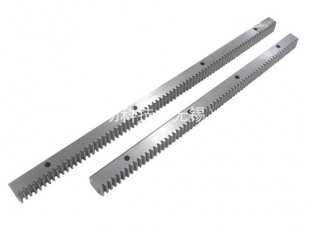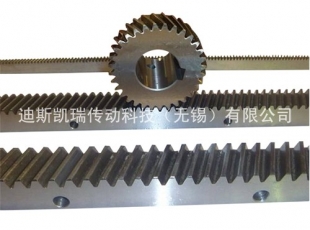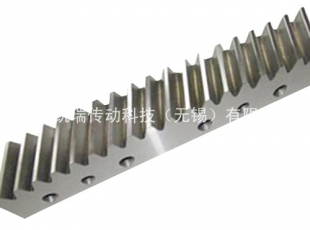Introduction of Gear Processing
The process of obtaining the specific structure and accuracy of gears by mechanical method. Gear is the core transmission component in automobile movement. Its processing quality will directly affect the vibration, noise and reliability of automobile assembly and even the whole vehicle. Sometimes it will become the key factor restricting the improvement of product level.
Gear classification
It can be divided into four categories.
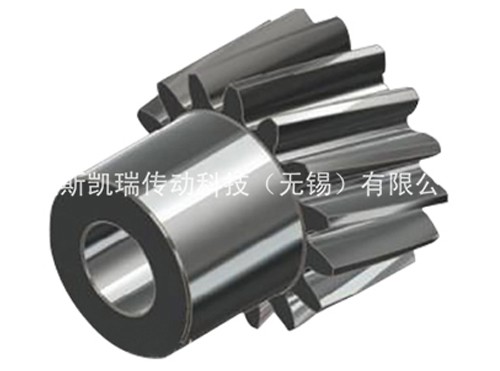
Cylindrical gears. According to the part structure, it can be divided into disc teeth and shaft teeth. According to the tooth shape, it can be divided into straight teeth and helical teeth. It can be used for transmission of parallel shaft power and motion, such as speed conversion of gearbox, ignition timing of engine, etc.
(2) bevel gears. According to the tooth profile, it can be divided into straight bevel gear and spiral bevel gear, which are used to transfer the power and motion of the cross or staggered axle, such as differential and reducer of the rear axle. The spiral bevel gear, according to the difference of the principle and method of tooth profile processing, has formed different system in the world, which is usually called system. China's automobile industry basically adopts arc shrinkage teeth (also known as Gleason system) or cycloid contour teeth (also known as Olikang system).
(3) Tooth rings. For example, the sliding gear sleeve for variable speed connection and the gear ring for planetary variable speed transmission belong to the inner gear ring, and the synchronizer gear ring for variable speed synchronization control belongs to the outer gear ring.
Special purpose gears. Such as oil pump gears, speedometer worm, steering rack and so on.
Gear Processing Technology
Automobile gears are generally mass specialized production. Cylindrical gears and bevel gears are widely representative. Different process combinations are needed according to different structures and accuracy. Due to the large investment in equipment, the selection of process modes usually takes full account of existing resources.
The control of micro-deformation and process stability in gear processing is relatively complex. Isothermal normalizing is usually used after forging in order to obtain good processing performance and uniform metallographic structure of trend deformation; for low-speed mesh gear with low precision requirements, it can be shaved before heating and no longer processed after heating, and the application of radial shaving expands the application scope of shaving; for cylindrical gear, there are two ways of honing and grinding after hot processing, which have low cost but tooth profile modification. Weak ability, high grinding accuracy and high cost; the top trimming along the tooth height direction and the drum tooth trimming along the tooth length direction can significantly reduce gear meshing noise and improve transmission performance, which is a widely concerned research field.
Straight bevel gears are mainly used for differential. Because of low speed and low precision requirements, precision forging is an important development direction. In spiral bevel gear processing calculation and machine tool adjustment, the complex and time-consuming manual operation has been replaced by modern special software and computer program. The introduction of finite element analysis makes process parameter design more reliable and convenient. There are two kinds of spiral bevel gears after hot processing: lapping and grinding. Because of the high cost, low efficiency and limitations of grinding, most of them are lapping at present, and the ability of geometric correction of lapping teeth is very weak. Therefore, the carburizing and pressing technology is mostly used for the driven gears of spiral bevel gears. The development of gear material and heat treatment technology is a challenging subject for deformation control in gear processing.
Gear Processing Machine Tool
Automotive gear machine tools can be divided into two categories: cylindrical gear and bevel gear machine tools, which have different precision levels and application ranges.
Cylindrical gear processing machine tools can be divided into hobbing, shaving, honing, grinding, extruding, chamfering machine tools according to the process mode; bevel gear processing machine tools can be divided into milling, shaving, drawing, grinding, lapping, chamfering, rolling inspection, quenching machine tools and so on. China has basically formed a relatively complete series of gear processing machine tools, and has developed six-axis NC grinding machine for spiral bevel gears with international technical level. However, the overall manufacturing level of gear machine tools lags behind that of Europe and the United States in terms of accuracy, life, stability and application of numerical control technology.
Gear Processing Tool
Gear processing has a special and complex tool system. It is necessary to select and design different tools according to different gear products and processing methods. For example, hobs, shaving cutters and shaving cutters for cylindrical gear processing, circular Broaches for spur bevel gears, and milling cutters for spiral bevel gears processing. Therefore, the grinding of gear cutters usually needs special machine tools, such as hob relief grinding machine, multi-functional shaving cutter grinding machine, spiral bevel gear tool grinding machine, etc.

The cutting-edge gear processing technology, brilliant fight!
Publication time:2019-10-09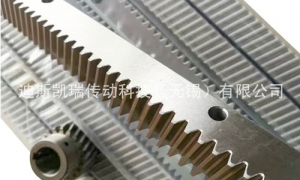
Development Trend of Gear Processing Technology and Equipment
Publication time:2019-10-09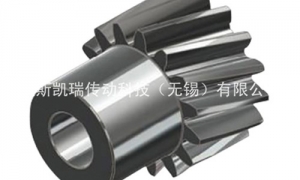
Some Key Points to Be Noticed in Gear Processing and Manufacturing
Publication time:2019-10-09
Why do we always want to do Gear processing, but we cant do it well?
Publication time:2019-10-09
Development Trend of Gear Processing Technology and Equipment
Publication time:2019-10-09
Introduction of Gear Processing
Publication time:2019-10-09
Common Defects and Solutions in Gear Hobbing
Publication time:2019-10-09
Several Key Technologies in Rack Grinding Machine
Publication time:2019-10-09
What is gear machining?
Publication time:2019-10-08
The Advantage of Rack Processing Roller Rack in Motion Mechanism
Publication time:2019-10-08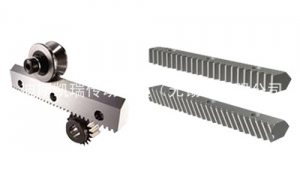
Introduction to the Characteristics and Parameters of Rack Machining Rack
Publication time:2019-10-08
Common Materials for Gear Processing
Publication time:2019-10-08
1The cutting-edge gear processing technology, brilliant fight!
2019-10-09

2Development Trend of Gear Processing Technology and Equipment
2019-10-09

3Some Key Points to Be Noticed in Gear Processing and Manufacturing
2019-10-09

4Why do we always want to do Gear processing, but we cant do it well?
2019-10-09

5Development Trend of Gear Processing Technology and Equipment
2019-10-09

6Introduction of Gear Processing
2019-10-09


